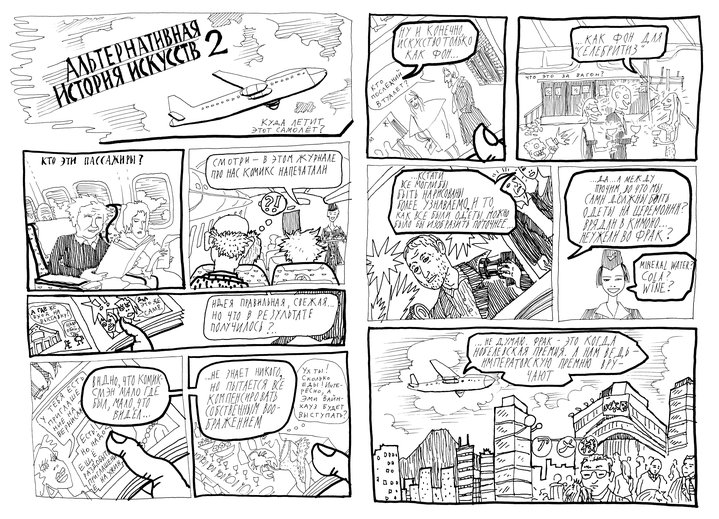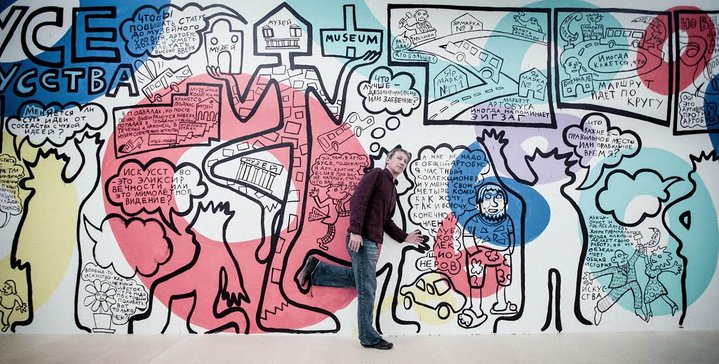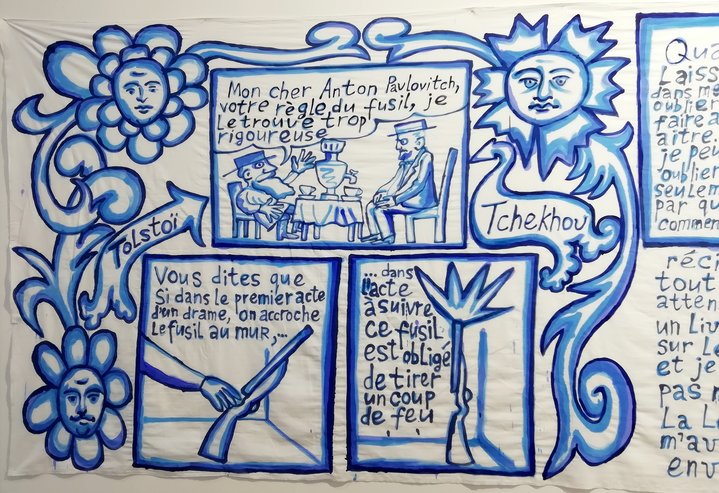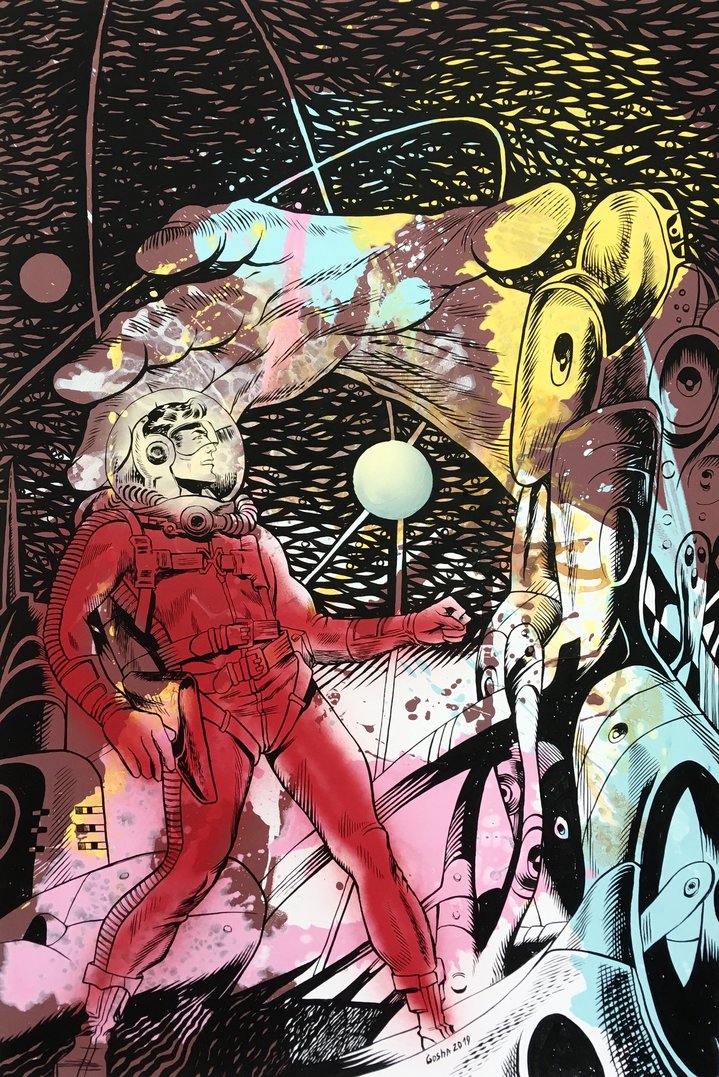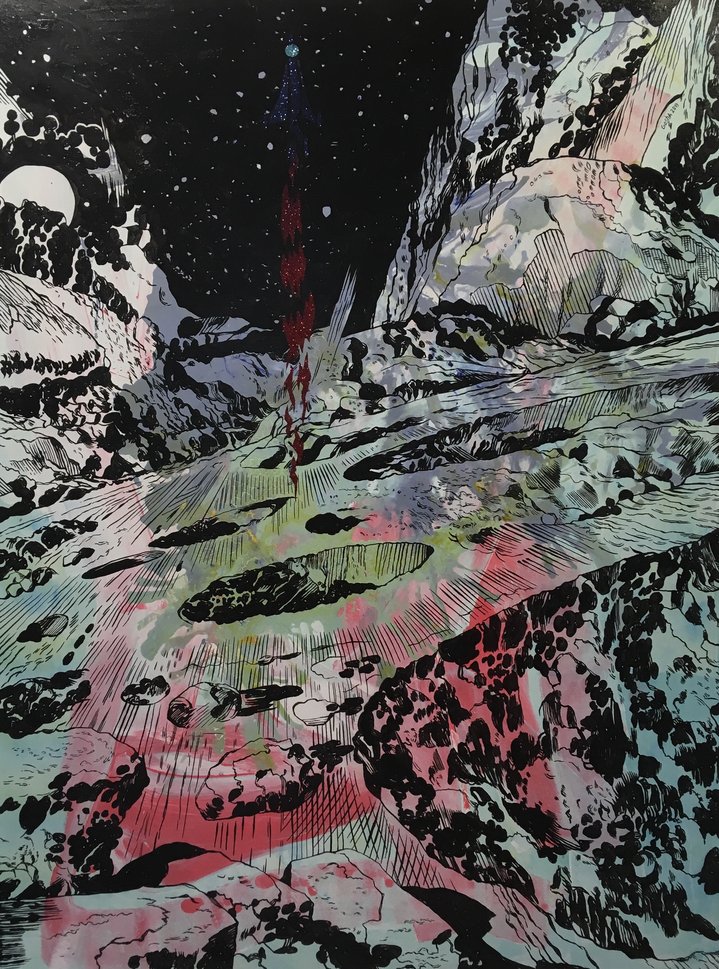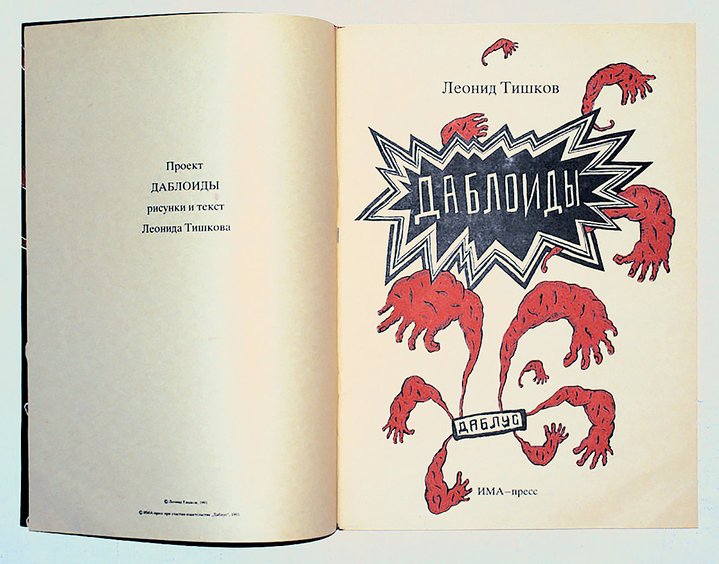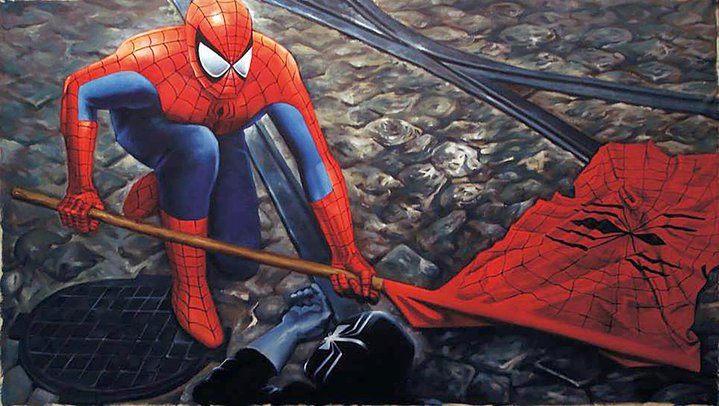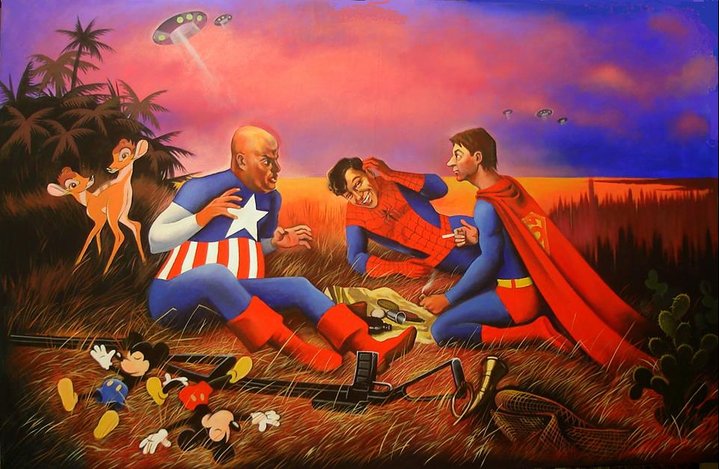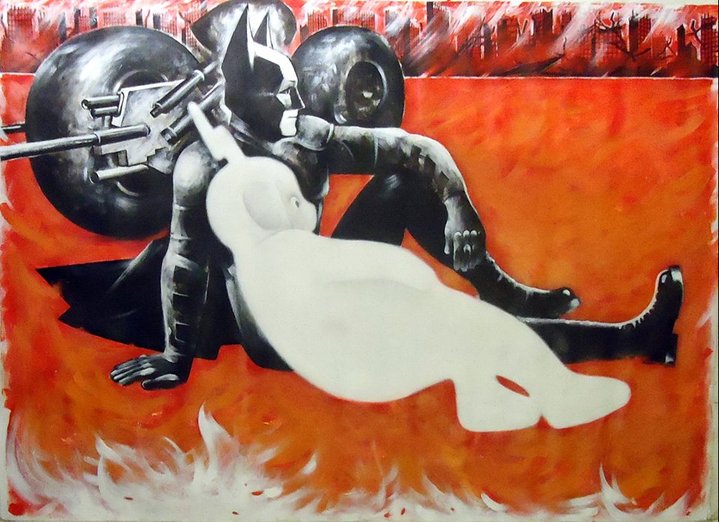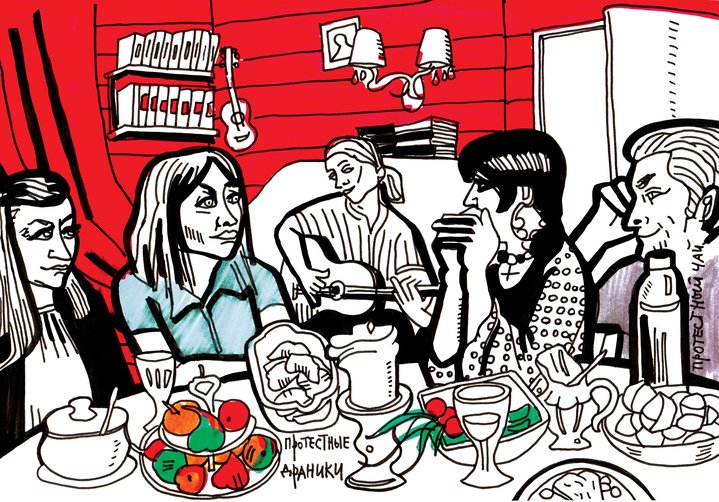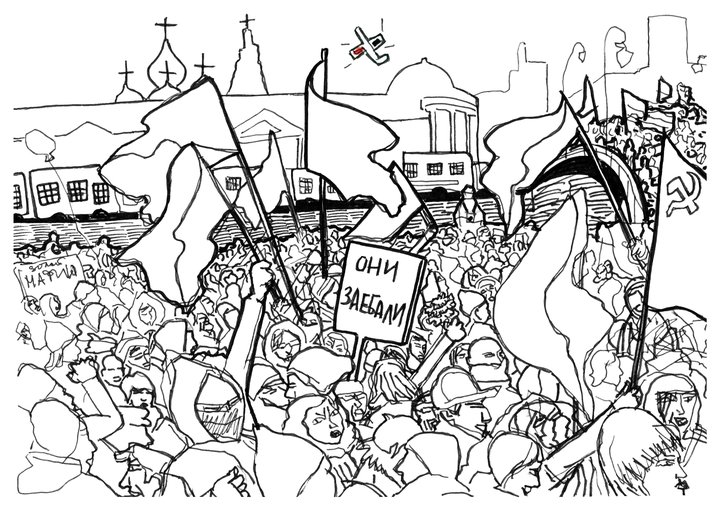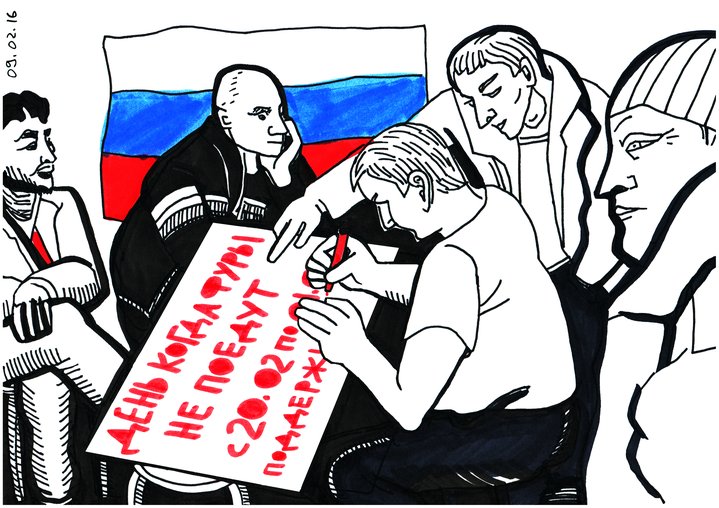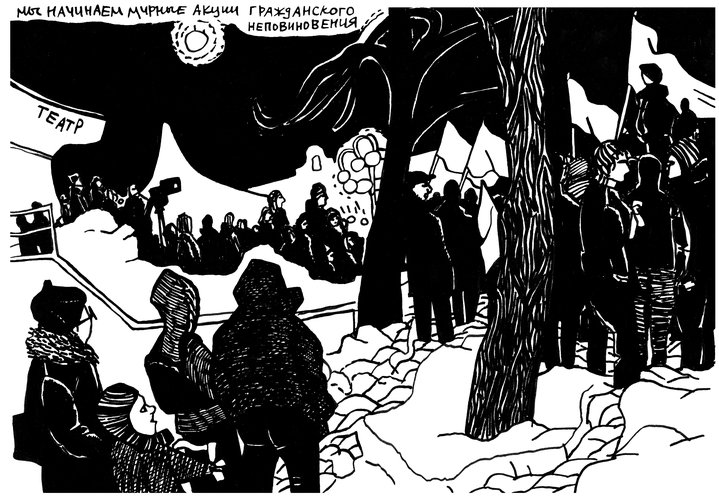Five Russian artists inspired by comics
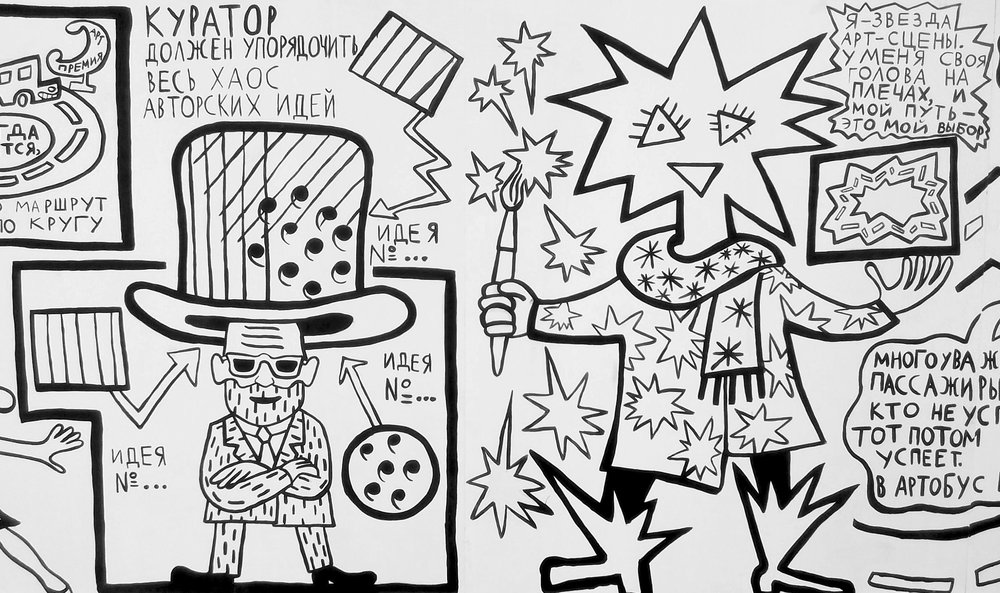
Georgy Litichevsky. From "ARTobus of contemporary art," 2015. Commissioned by Garage Museum of Contemporary Art
Comics are not very popular in Russia. There are publishing houses that cater to the genre and their fans flock to an annual festival in Moscow,but the community remains relatively small and isolated. Nevertheless, several now-established artists were so taken by the aesthetics of comic strips that they managed to unobtrusively smuggle them into museums and galleries.
Georgy Litichevsky
Born in 1956, Georgy Litichevsky learned about the existence of comics from an article in the Soviet magazine Science & Life (Nauka I Zhizn) in the mid-1960s. Litichevsky never received any formal training in visual art. He studied at Moscow State University, majoring in Ancient History, and there, he started to draw his first comic strips. They told his own, unconventional version of historical events. In the 1980s, Litichevsky was an active member of underground art groups based in Moscow’s legendary artistic squats, "Detsky Sad" (Kindergarten) and Furmanny Pereulok. At Detsky Sad, he met his friend and occasional collaborator Georgy Ostretsov. Since 1993, Litichevsky has been creating comics about the Russian art scene, full of caustic institutional critique for the contemporary art publication The Art Magazine (Khudozhestvenny Zhurnal). The artist, based between Moscow and Nuremberg since the late 1990s, uses the visual language of comics in his paintings. They feature large-scale drawings and temporary murals, which often cover entire walls in museums and galleries. They dwarf the viewer, who suddenly finds themselves engulfed by the stories unfolding all around them. A full collection of his comics was published as a book, "Opus Comicum," in 2016.
Georgy Ostretsov
This Moscow artist (b. 1967) was fascinated by French comics at an early age. Although he could not understand a single word written in them, he liked to peruse foreign children’s magazines brought to him by his art historian mother and her artist friends. His passion was rekindled during the 10 years he spent in France, after moving to Paris in 1988. Ostretsov, who never had any connection to the street art scene, often uses techniques favoured by urban guerilla artists such as spray-painting and stencils. However, he sprays on canvasses rather than walls, creating comics-inspired works full of drama and wild movement. He even manages to transfer the imagery of the comics to household objects. Ostretsov, who works in different genres including sculpture and installations, has an amazing knack for woodwork. Super-heroes and voluptuous beauties often adorn the surfaces of the artsy furniture which he creates with his own hands. Both paintings and furniture are now on view at his solo show at Syntax gallery in Moscow’s Cube art centre, which will run from 6 June until 20 July.
Leonid Tishkov
Tishkov, a multi-talented artist (b. 1953), works in different media, ranging from installations and performances to knitted objects and sculptures made of pasta. Yet comics play an important part in his artistic practice. Tishkov began his art career as a book illustrator, and in his own work he combines the traditions of Western comics, Soviet caricature and the “album” genre favoured by Moscow Conceptualists like Ilya Kabakov and Viktor Pivovarov. Throughout his career he has created several series of paintings, drawings and texts about quirky imaginary creatures such as “Those Who Live Inside an Elephant’s Trunk,” or “Dabloids” who looked like red socks that have come alive. They have been exhibited in many museums in Russia and abroad. Eventually, these creations evolved from 2D to 3D. Graphic works and books were complemented by sculptures, installations and performances. In 1990 Tishkov founded his own independent publishing house which issued three books of comics about these fantastic life forms: “Dabloids”, “Churki”and “Stomaki”.
Alexander Savko
This Moscow-based artist, born in 1957 in Moldova, has developed a unique style of painting. He combines images of classical art and popular culture, substituting heroes and gods with The Simpsons and space invaders. The humorous and absurd effect caused by this collision of the sublime and the profane sometimes leads to unexpected results. One painting from his series entitled “Mickey Mouse’s Journey Through the History of Art,“based on a 19th-century etching of the Sermon on the Mount, was deemed “extremist” by a Russian court in 2011. (The figure of Christ in that painting was substituted with the image of Mickey.) Savko’s set of favourite characters includes super-heroes from the Marvel universe, such as Captain America, Spiderman, and others. They are wittily integrated into the paintings of Russian 19th-century classics, such as the works of Vassily Perov. These works are familiar to every Russian from an early age, but constant reproduction has reduced them to visual clichés. Savko’s superheroes aim to save these innocent paintings from sinking into the abyss of banality.
Victoria Lomasko
Lomasko, a Moscow artist, curator and activist (b. 1978), is best known for reporting political events in the form of comics. Her unique genre was born from necessity. In Russia, as in many other countries, it is forbidden by law to take photographs or make video recordings during court hearings. As a result, the only way to document a trial visually is to make sketches in the courtroom. Together with a fellow artist, Anton Nikolaev, Lomasko recorded the infamous “Forbidden Art” case in 2007. An ultra-conservative radical group sued the curators of the “Forbidden Art-2006” exhibition, Andrey Erofeev and Yuri Samodurov, on the grounds they had hurt the group’s religious feelings. The court ruled in favour of the group and imposed heavy fines on the two curators. The sketches made by Lomasko, which straddled the line between comics and caricature, were published in the popular magazine Big City (Bolshoi Gorod) and subsequently appeared as a book. Later on, Lomasko started to work independently, making graphic reports on the opposition rallies in Moscow in 2011-2012, the problems faced by LGBTQ families, modern-day slavery, the stigmatising of HIV-infected persons and other poignant issues of the day. Her solo exhibition will run at Kunstmuseum Basel from 24 August until 10 November.






